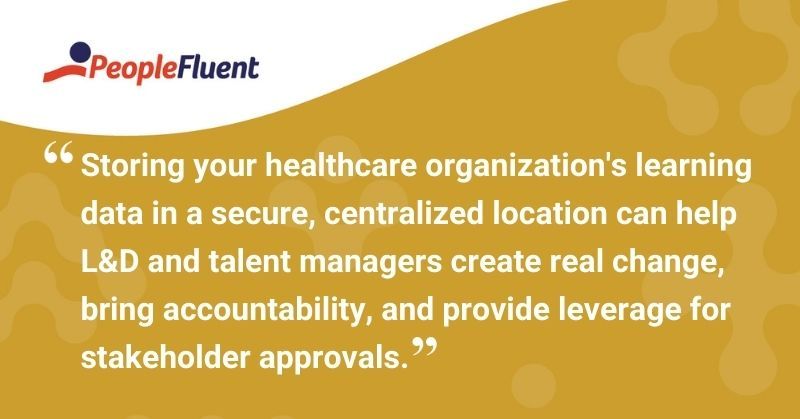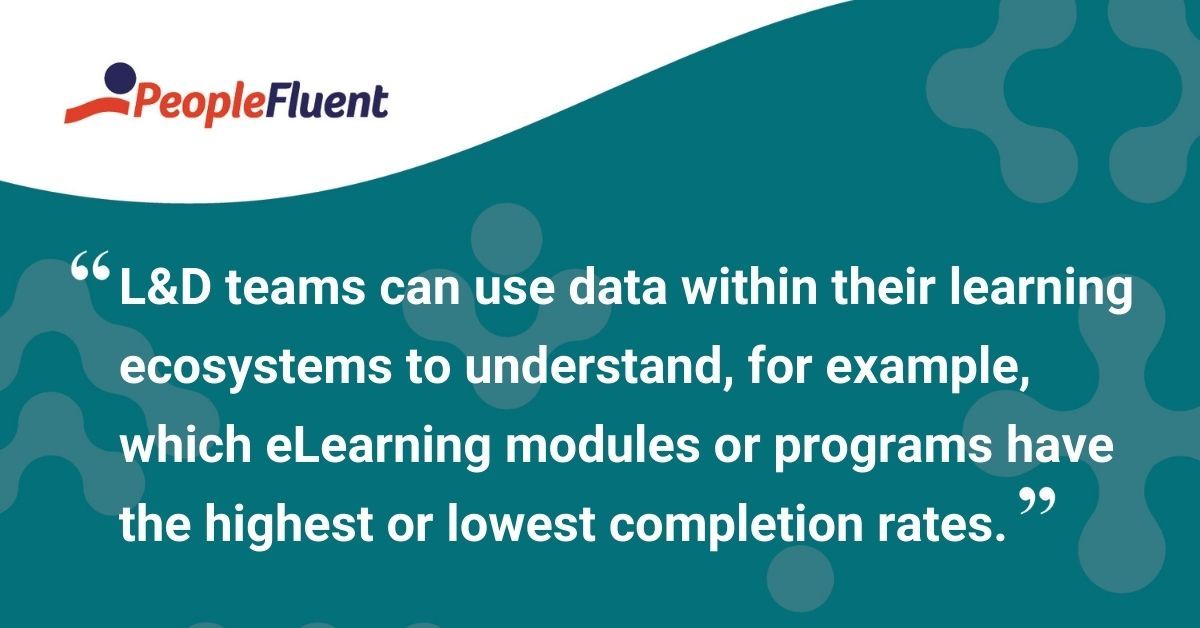Published: Dec 14, 2020Time to read: 6mins Category: Learning
How Leveraging Big Data In Learning Can Save Time, Money, and Lives [Healthcare Stories]
This article is based on the webinar ‘Measurement That Saves Time, Money, and Lives’ in partnership with our sister company, Watershed. The third in a four-part series focusing on high-consequence learning in healthcare, in this session, experts from several healthcare organizations came together to discuss the impact and importance of measurement in learning. While the insights come from the healthcare sector, they aren’t limited to that sector. Read on for some of the highlights from the discussion.
As things continue to rapidly change across industries and with the demand for healthcare incredibly high, healthcare leaders need to find better ways to manage data efficiently at scale. From patient care and treatment history, to compliance rates and learning completion, this pertinent data (and how it’s handled) can make the literal difference between life and death.
This is where measurement and learning technology ecosystems come in.
You might also like: ‘Learning From Each Other: How Learning Design Can Benefit Talent Paths’
What Is a Learning Ecosystem?
A learning ecosystem encompasses the people involved in creating and designing learning programs, learning processes, and the tools that deliver or otherwise facilitate and support L&D teams throughout the business.
Most organizations already have measurement systems in place, and it’s important to recognize that. Whether you have a Learning Management System (LMS), a Customer Relationship Management (CRM) system, or a full suite of analytics tools, a fully integrated ecosystem can offer the ability to create really valuable insights.
The resulting data and analytics from your organization’s learning ecosystem can save time, save money, and in the healthcare industry, it can save lives. Three examples of how this impacts real lives can be found in this recent blog from PeopleFluent's sister company, Watershed.
Understanding the ecosystem you already have will help you gain a huge amount of insight into the impact of L&D in your organization. This insight will not only help you to improve your L&D programs moving forward, but can also assist when it comes to getting buy-in from senior stakeholders.
Related reading to download today: ‘6 Things LMS Users in High-Consequence Industries Must Know’
Tying Together Performance and Learning
In large organizations—specifically healthcare or other high-consequence industries—the volume of data can be overwhelming, especially when it’s relative to compliance. Storing this data in a secure, centralized location can help L&D and talent managers to create real change, bring accountability, and provide leverage for stakeholder approvals.
A Learning Record System (LRS) essentially aggregates data from places like Performance Management Systems, LMSs, and any other HR and L&D systems you may use. This ‘big data’ is then organized in a single repository (or records store). When paired with a learning analytics platform, or other reporting tool, you’re able to gain more meaningful insights into the impact of learning initiatives on performance and the business as a whole.
With these insights, L&D professionals can create training that further develops employees, resulting in a more confident and ready workforce. It also creates the opportunity for worker advancement in the organization.

Read more from the blog: ‘The 13 Must-Have Features of a Learning Management System’
Identifying Specific Training Needs Through Data
Access to large volumes of data can provide you with incredible insight into a wide range of information about the performance of both your people and your learning initiatives. You can use data within your learning ecosystem to understand, for example, which of your eLearning modules or programs have the highest or lowest completion rates.
This could tell you that the learning content is outdated or unfit for purpose. Or, you could infer from the data that your module needs a refresh, especially if it’s something like compliance training that requires your learners to retake the course every six to 12 months. Alternatively, it could show you which of your programs or courses drive high success rates, with measurable behavioral changes and high pass rates.
Access to this data is also a great way to drive efficiencies in your learning.
For example, it could highlight any modules that simply aren’t used anymore or potential errors in your learning pathways. If you tie performance and learning data together within your LRS and wider ecosystem, this data can be used to identify performance gaps.
This visibility allows you to tailor any upcoming learning initiatives towards such gaps and strengthen your workforce in a very targeted way—thus helping you create a learning strategy that’s more directly tied to your overall business objectives. This is a critical step toward more efficiency as well as increasing stakeholder engagement for future projects.
Using the data available from your wider learning ecosystem can save you time and money. Ultimately, in the healthcare industry, this has a real impact on saving lives and creating better patient experiences.

Also read: ‘Dealing With Data: 4 Steps to Take When Switching to a New Learning Platform’
Let’s look at how this has worked for the University of Nebraska Medical Center, an LRS client of Watershed’s.
Measurement in Action
Nebraska Medicine is a public center of health sciences research, patient care, and education in Omaha, Nebraska. The staff range in education from high school graduates to doctorate level. Therefore, the L&D team needed to provide content that worked for everyone’s needs.
They used adaptive learning pathways to identify needs by role and experience and deliver training based on needs. Following the creation of these adaptive pathways and the use of advanced analytics, the team was able to cut out unnecessary training, saving time for those who were previously taking it as well as money for unnecessary software licenses.
Making full use of analytics, the healthcare organization’s L&D team was able to:
- focus on learning intervention at the point of need—identifying performance gaps and trends,
- understand the effectiveness of the training already in place,
- and create greater efficiencies in reporting.
Pulling all of the learning data into one place allowed the organization to measure the business impact of learning, as well as create a more targeted learner journey that ultimately resulted in time and money saved. On top of this, staff have had more time working on the floor—a feat that has proved absolutely critical during the COVID-19 pandemic.
Related reading: ‘How to Measure the Success of Learning Programs’
To access all of the recordings from this webinar series, click here. To learn more about how you can effectively measure the business impact of learning in healthcare, contact our sales team.
Discover How Learning Builds Skills and Ensures Compliance
Design, deploy, track, analyze, and report on enterprise learning and compliance programs. PeopleFluent helps you execute your programs seamlessly, so employees upgrade their skills and you get results.